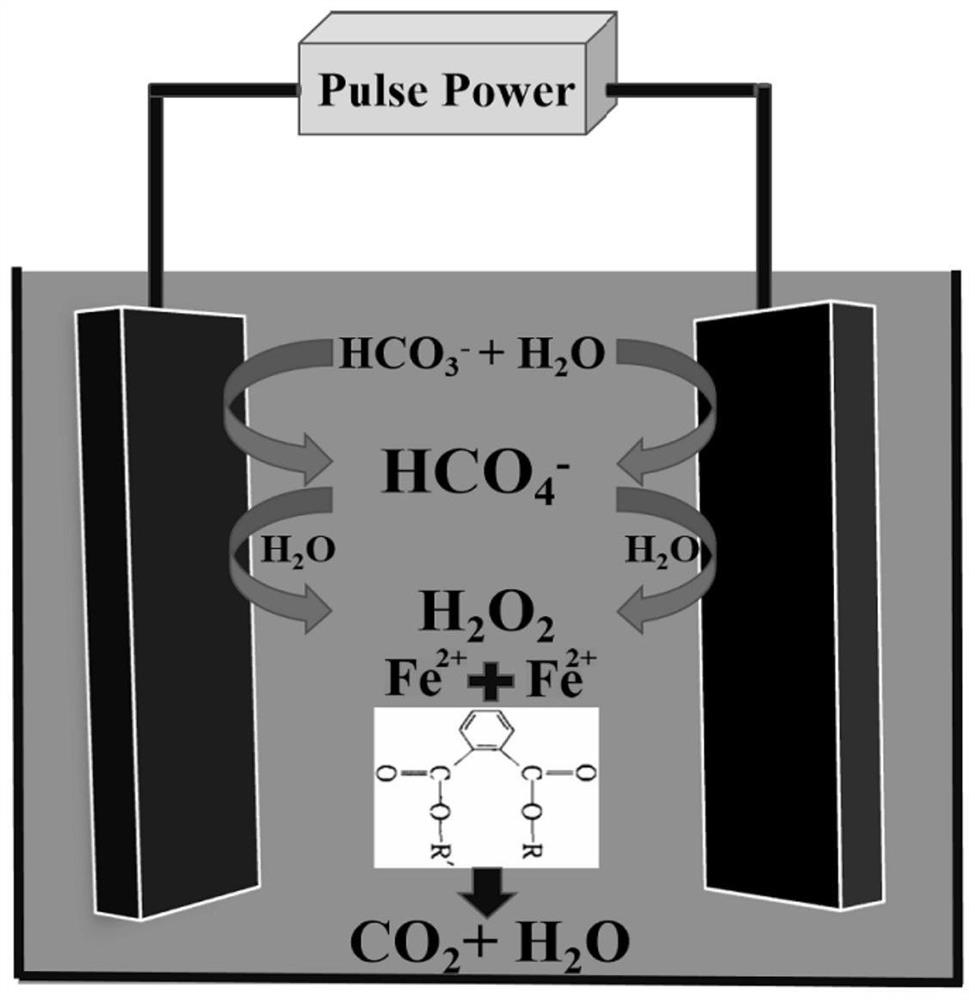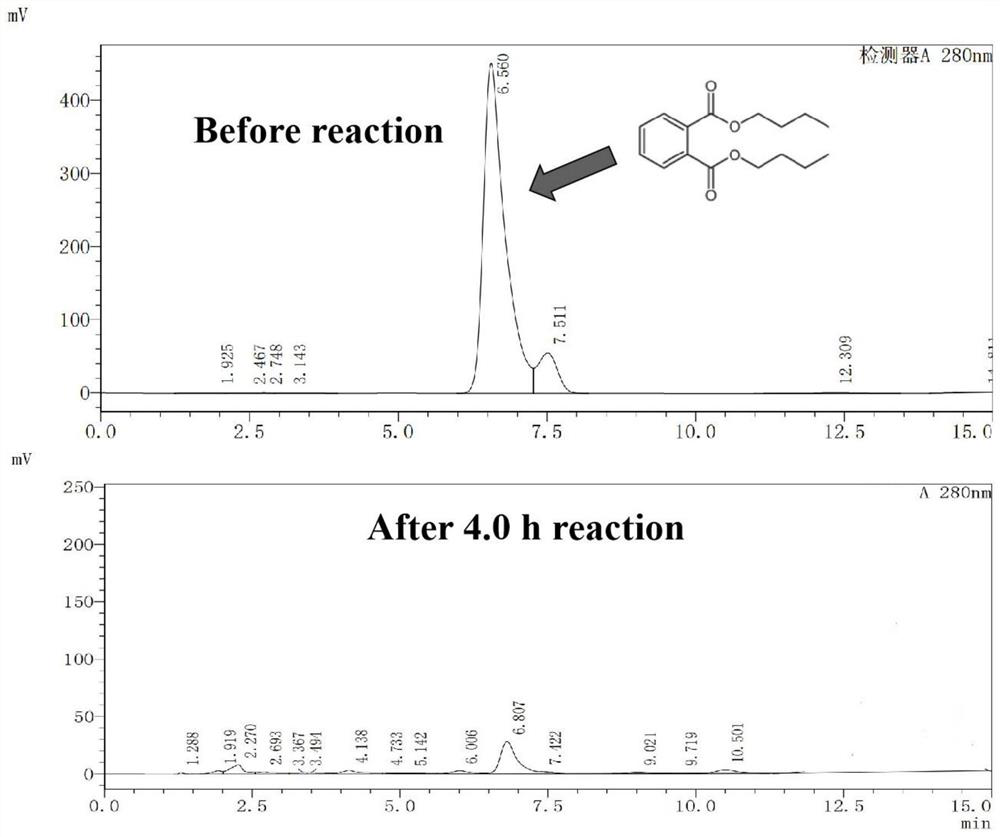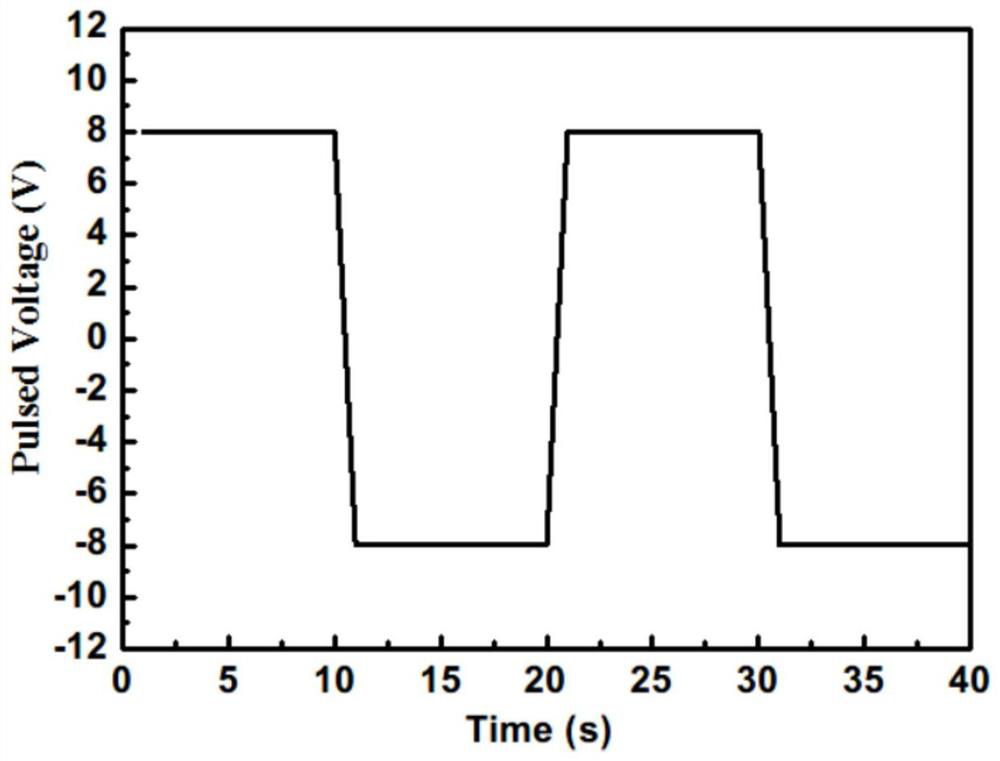Method for repairing and treating phthalate-polluted soil through hydrogen peroxide produced through pulse electrochemistry
A technology for electrochemically producing hydrogen peroxide and phthalates, which is applied in the field of soil remediation and can solve the problems of unsatisfactory effect, limited water content and gas permeability, etc.
- Summary
- Abstract
- Description
- Claims
- Application Information
AI Technical Summary
Problems solved by technology
Method used
Image
Examples
Embodiment 1
[0027] 1.5L of 0.5M NaHCO 3 Add 20kg of the water solution to the crushed paddy field soil polluted by di-n-butyl phthalate in a certain place in Chongqing, mix well and insert two sizes of 30 (length) cm×15 (width) cm×1 (thickness) A graphite plate of cm was used as an electrode, and the distance between the two electrodes was 30 cm. Then, a square wave pulse voltage of ±6.0 V was applied to the two electrodes with a pulse width of 20 s, and the electrochemical repair was performed for 4 h.
[0028] The rice farmland soil after the above treatment was washed with water, the eluent was collected, filtered and then analyzed by liquid chromatography, and the rice farmland soil before the treatment was used as a control, and the results were as follows: figure 2 As shown, comparing the data before and after treatment, it was found that 95% of the di-n-butyl phthalate in the rice farmland soil was degraded and mineralized.
Embodiment 2
[0030] 1.0L of 1.0M KHCO 3 Add 15kg of crushed aqueous solution to the soil of a vegetable field polluted by dimethyl phthalate in a certain place in Chongqing. )cm carbon cloth as electrodes, the distance between the two electrodes is 20cm, and then a square wave pulse voltage of ±8.0V is applied to the two electrodes, and the pulse width is 10s (see image 3 ), electrochemical repair treatment for 2.5h.
[0031] The vegetable field soil after the above treatment was rinsed with water, the eluate was collected, filtered and then analyzed by liquid chromatography, and the vegetable field soil before the treatment was used as a control. The results were as follows: Figure 4 As shown, comparing the data before and after treatment, it was found that 90% of the dimethyl phthalate in the vegetable field soil was degraded and mineralized.
Embodiment 3
[0033] 2.0L of 1.5M NaHCO 3 Add 30kg of the water solution to the crushed paddy field soil polluted by diisononyl phthalate in a certain place in Chongqing, mix well and insert two sizes of 40 (length) cm×15 (width) cm×2 (thickness) A graphite plate of cm was used as an electrode, and the distance between the two electrodes was 35 cm. Then, a square wave pulse voltage of ±10.0 V was applied to the two electrodes with a pulse width of 40 s, and the electrochemical repair treatment was performed for 5 h. Among them, the concentration and degradation rate of diisononyl phthalate in rice farmland soil changed with electrolysis time as follows: Figure 5 shown by Figure 5 It can be seen that as the reaction time gradually increases, the concentration of diisononyl phthalate decreases gradually.
[0034] The rice farmland soil after the above treatment was rinsed with water, the eluate was collected, filtered, and then analyzed by liquid chromatography. The rice farmland soil befor...
PUM
 Login to View More
Login to View More Abstract
Description
Claims
Application Information
 Login to View More
Login to View More - R&D
- Intellectual Property
- Life Sciences
- Materials
- Tech Scout
- Unparalleled Data Quality
- Higher Quality Content
- 60% Fewer Hallucinations
Browse by: Latest US Patents, China's latest patents, Technical Efficacy Thesaurus, Application Domain, Technology Topic, Popular Technical Reports.
© 2025 PatSnap. All rights reserved.Legal|Privacy policy|Modern Slavery Act Transparency Statement|Sitemap|About US| Contact US: help@patsnap.com



